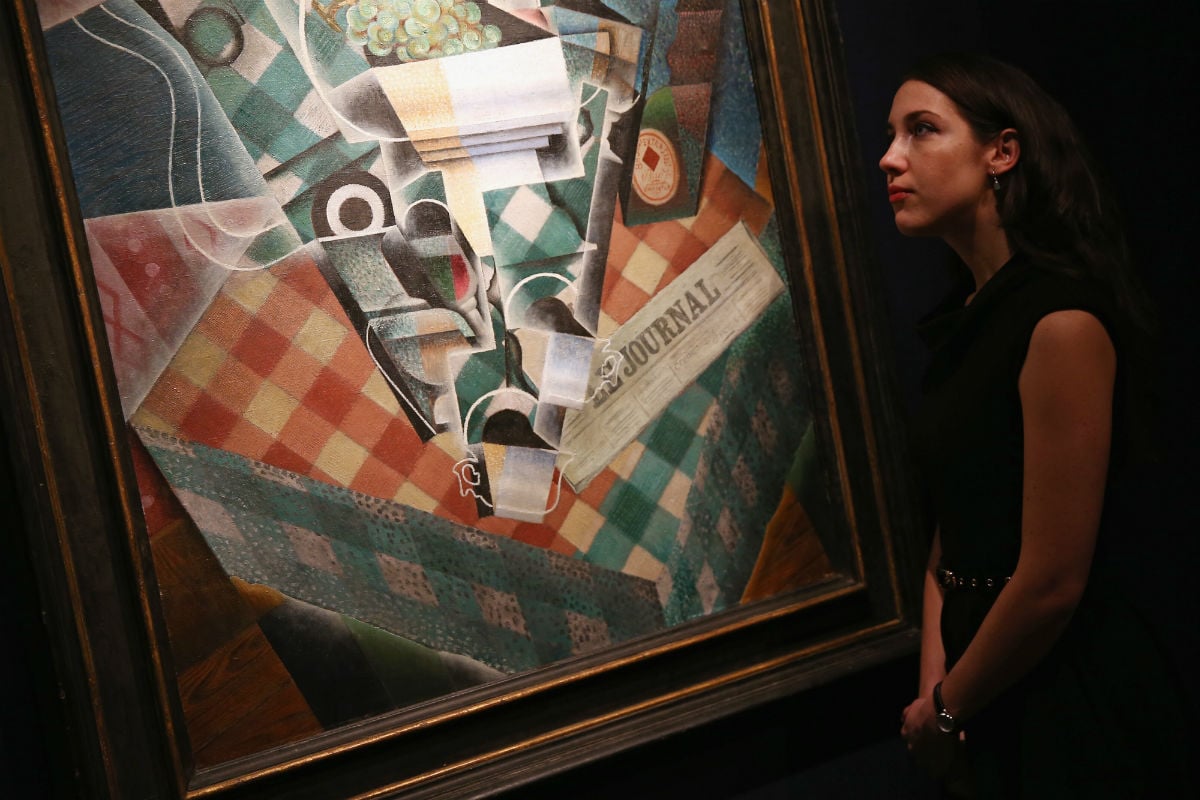
The popular practice of having young women pose with artworks at auction previews may have just gone the way of the Miss America swimsuit competition. The world’s two largest auction houses, Christie’s and Sotheby’s, say they are working to ensure a greater diversity in photographs of works destined for the auction block.
The upshot: You might soon be seeing a lot fewer young women posed awkwardly in front of sculptures or paintings with their necks craned at angles that can’t possibly allow them to properly see the art they are supposed to be looking at.
Two art handlers pose with Petr Iosifovich Smukrovich’s Toilette on June 1, 2018 ahead of Sotheby’s Russian art sales in London, England. (Photo by Tristan Fewings/Getty Images for Sotheby’s)
As we pointed out last month in a post that we honestly had no idea might actually help encourage a new approach, these images of women standing in front of art—which are taken and supplied by press agencies and used in auction coverage across the globe—are by far the most popular genre of art-market stock photography.
Or, at least, they were. At the most recent auction previews held last week in London—where most of these images are taken and distributed—the Times reported there were no youthful female auction house employees in sight. Most of the images were enlivened by art handlers; an original map of the Hundred Acre Wood by E.H. Shepard was presented by Sotheby’s book specialist Philip Errington.
“Just as we deal with a huge range of art, so too we want to ensure it is shown to our audiences around the world in as varied and engaging a way as possible so as to best reflect its medium, size, and subject matter,” a Sotheby’s representative told artnet News.
Sotheby’s book specialist Philip Errington holds The Original Map of the Hundred Acre Wood by E.H. Shepard, estimated at £100,000 to £150,000, at the unveiling of original Winnie-The-Pooh sketches at Sotheby’s on May 31, 2018 in London, England. (Photo by Chris J Ratcliffe/Getty Images for Sotheby’s)
Representatives for both auction houses pointed out that the preponderance of young women in the final photos distributed by the press is ultimately the result of choices made by photographers and photo editors at the publications themselves, not by the auction houses.
“Traditionally, the media and photographers used to specifically ask that there be female employees in shot, which we used to accommodate while simultaneously also offering other types of pictures,” a Christie’s spokesperson said.
Nevertheless, both auction houses are now working to switch up the presentation. (A representative from Phillips declined to comment on whether its own approach has changed.)
At Christie’s preview for its Russian art sale last week, for example, photographers captured two male art handlers seated in chairs in front of a painting (a new alternative to standing in front it for scale?) and another reading the catalogue in front of its cover lot, a painting by Boris Grigoriev. The moral of this story may be that auction preview photos are incredibly awkward regardless of who is in them—but at least that discomfort is now equal opportunity.
In any event, the development is good news not only for consumers of art-market media, but also for the auction houses’ young employees. Think of how much more they can get done now that they don’t have to spend their time standing in front of an artwork staring into space!